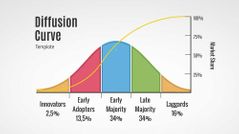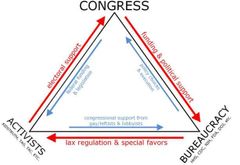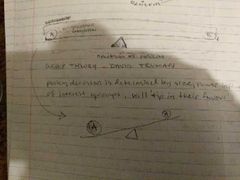![]()
![]()
![]()
Use LEFT and RIGHT arrow keys to navigate between flashcards;
Use UP and DOWN arrow keys to flip the card;
H to show hint;
A reads text to speech;
30 Cards in this Set
- Front
- Back
|
Public opinion |
Citizens attitudes about leaders, issues, institutions and events |
|
|
Values/beliefs |
Basic principles that shape a person's opinion |
|
|
Political ideology |
Cohesive set of beliefs that form a general philosophy about the role of government |
|
|
Attitudes/opinions |
Specific preference on political issue |
|
|
#1 cause of debate |
How much? (Freedom, opportunity to succeed, freedom of speech, majority vote) |
|
|
Political socialisation |
Learning and accepting society's norms traditions and values |
|
|
Primary reference group |
"cabinet", those closest to you that affect you the most Influences political socialisation |
|
|
Secondary reference group |
Family, schools, peers, interest groups, media Influences political socialisation |
|
|
Diffusion of ideas |

2.5 innovators 13.5 early adopters 34 early majority 34 late majority 16 laggards |
|
|
Opinion polls |
Scientific instruments to measure public opinion |
|
|
Issues with polling |
Sampling (needs 1500 N) Wording (not loaded) Uniformed opinion Illusion of saliency (convinces you it's most important) Central tendency (e.g. that 100 is way better than 99 on yelp) Bandwagon effect Push polling-no opinion until someone asks Margin of error >.5% is useless |
|
|
Media diversity |
Less diverse due to corporate ownership Due to national news syndicate (corporate ownership)
|
|
|
1996 telecommunication act |
Merger leading to nationalisation of news |
|
|
Regulation of media |
Regulated heavily Except satellite and hbo Streaming not responsible bc parental control |
|
|
Affects news coverage |
Journalist Sources (agenda setting, framing, selection bias, breaking news syndrome/sensationalism) Consumer Events Adversarial journalism |
|
|
Pluralism |
Market place of ideas, belief that interests will compete, moderate and compromise Critique: overrepresentation of wealthy, self serving and biased info |
|
|
Interest group qualities |
1 increases chance views will be heard 2 goal is to influence the government 3 represents interests and encourages political participation
I.e. gain power and access |
|
|
Benefits of interest groups |
Informational: conferences, research, publications Solidarity: friendship, networking, support Purposive: advocacy, representation, participation, common mission
|
|
|
Iron triangle (subgoverment model of public policy) |

Congressional committees pass laws for interest groups, groups gives clientele support to federal agencies, agencies give constituent services to commities Committees give money and authority to feds, who give regulation and benefits to interest groups, who vote for committee members |
|
|
Group theory (David Truman) |

Policy decision is determined by size, power, and influence of interest groups; will tip in their favor |
|
|
Iron law of oligarchy (Roberto micheles) |
The goal of the group is lost, instead becomes existing and gaining money and influence |
|
|
Attempts to influence elections |
PACs (political action committees) and mobilization (armies of support) |
|
|
Public policy |
Everything the government does or does not do |
|
|
Political parties |
Organised groups that attempt to influence the government by electing their members do important government offices |
|
|
Linkage |
A party is a link between people and government. Parties are ready made mobilized outgrowth of electoral process (majority based 2 party system including electoral college) and policy making process |
|
|
Electoral realignment |
Large # voters changing party alliance Lots of voter participation Stable change in party controlling govt |
|
|
Third party blocks |
-one of two major parties adopt their issues -single member plurality, electoral system limits their opportunities for electoral success -270 electoral votes (1/2 house and senate and DC) |
|
|
Aspects of American paryies |
Organisation-formal structures Party-in-the-electorate and elections: (socioeconomic status, family traditions, issue based voting, ideological fence) Party-in-the-government: ability of parties to structure and control govt |
|
|
Agenda setting |
Power of the media to bring public attention to particular issues or problems |
|
|
Framing |
How a story is interpreted |

